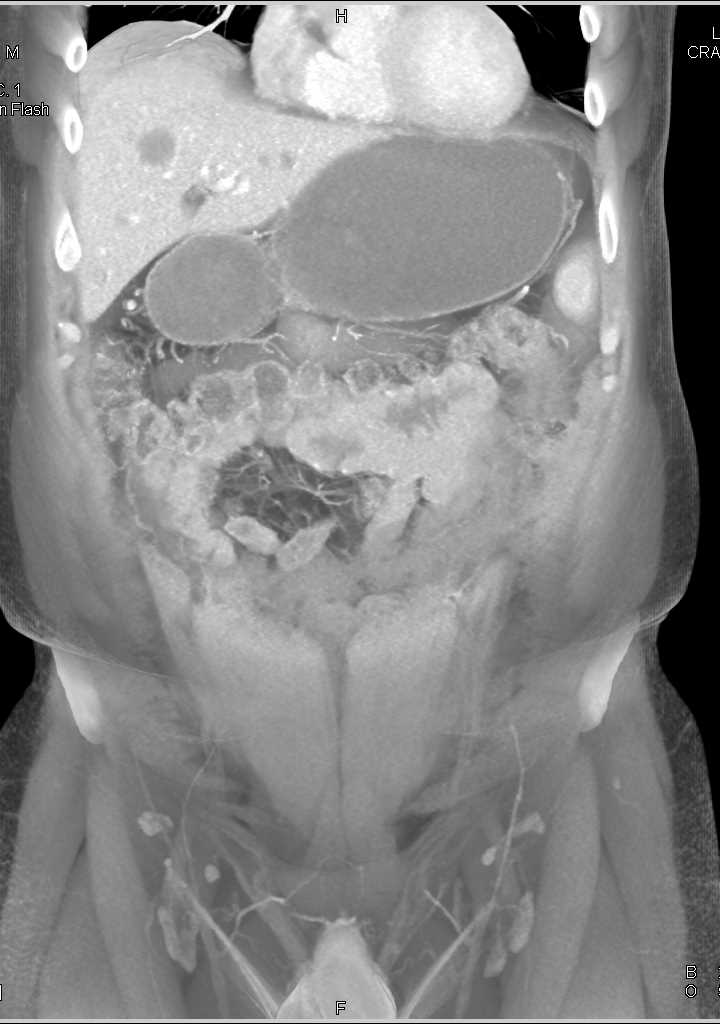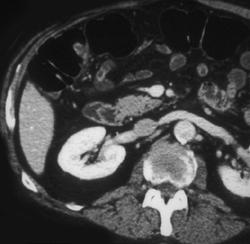
The splenic flexure lies higher than the hepatic flexure. Normally the gas would pass around the feces but can accumulate in areas where the colon narrows. These large bubbles are more likely to form when there is resistance to any further gas movement like if the lower parts of the colon are filled wth feces. It can also cause the gas to form large bubbles which may then become lodged between solid and liquid contents. The contractions of colonic muscles pushes solids, liquids and gases along. Collectively, this gas is expelled as flatus, also commonly referred to as fart. In addition, some gas from the bloodstream is passed out into the intestines. Along with gas from intestinal bacteria and colonic fermentation, a significant amount of gas accumulates in small and large intestine. However, some of this air may reach the lower digestive tract. Most swallowed air is passed out from the upper digestive tract during belching (burping). Sometimes it is simply considered a symptom of conditions like irritable bowel syndrome (IBS) alongside bloating and excessive flatulence. However, splenic flexure syndrome is not always recognized as a separate clinical entity. Splenic flexure syndrome tends to be more common and is possibly due to the sharp bend in this part of the colon. It is important to known that trapped gas can occur at both bends of the colon and is therefore referred to as either hepatic flexure syndrome at the right bend or splenic flexure syndrome at the left bend.

Splenic flexure syndrome is where gas becomes trapped at the left bend of the colon causing fullness, discomfort and even pain.

However, sometimes the gas may be trapped in one small section of the bowel where it can cause significant stretching, severe fullness sensation and even pain. Most of the time this is temporary and the gas moves along quickly to be passed out. This gas can build up to cause stretching of the bowel walls which may create a sensation of fullness or bloating. Gas in the bowels (intestines) move along its course until it can be expelled through the anus as flatus.


 0 kommentar(er)
0 kommentar(er)
